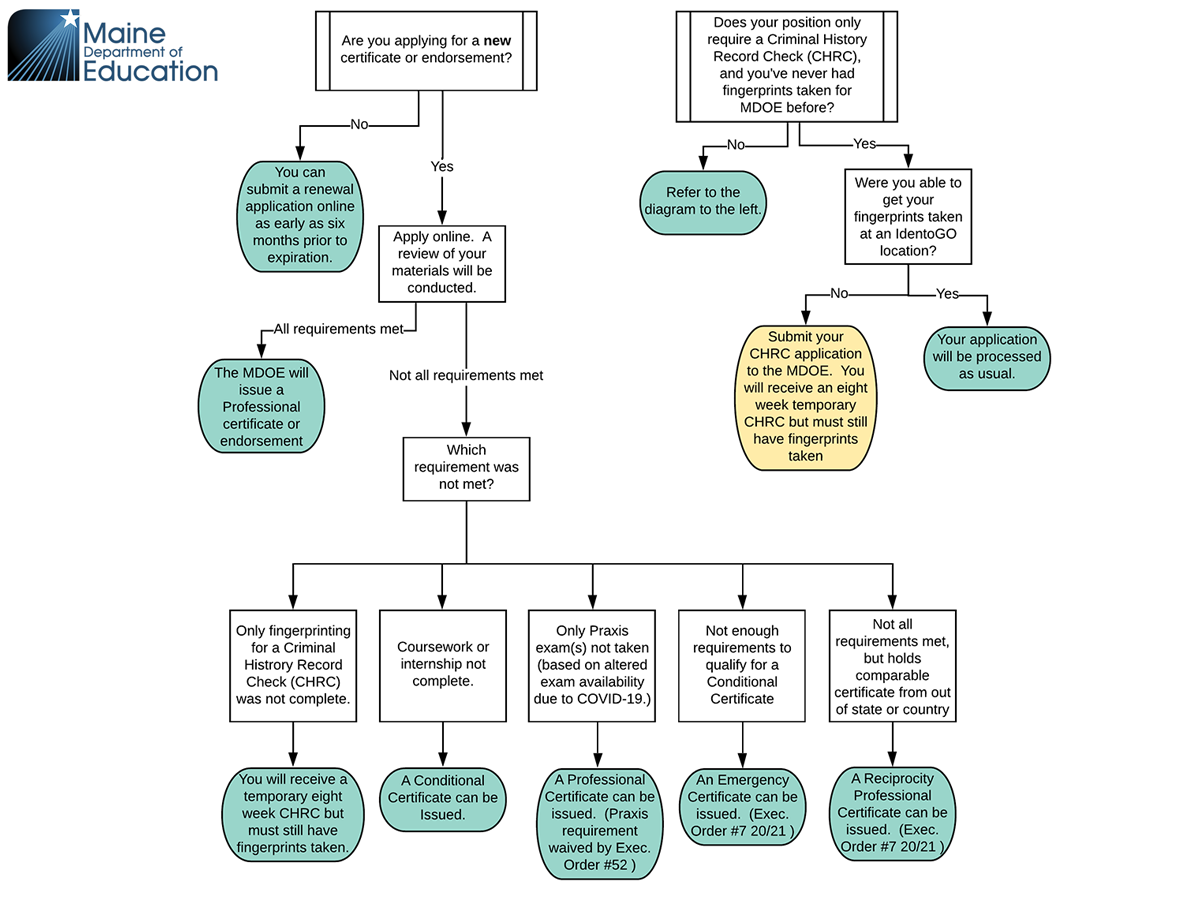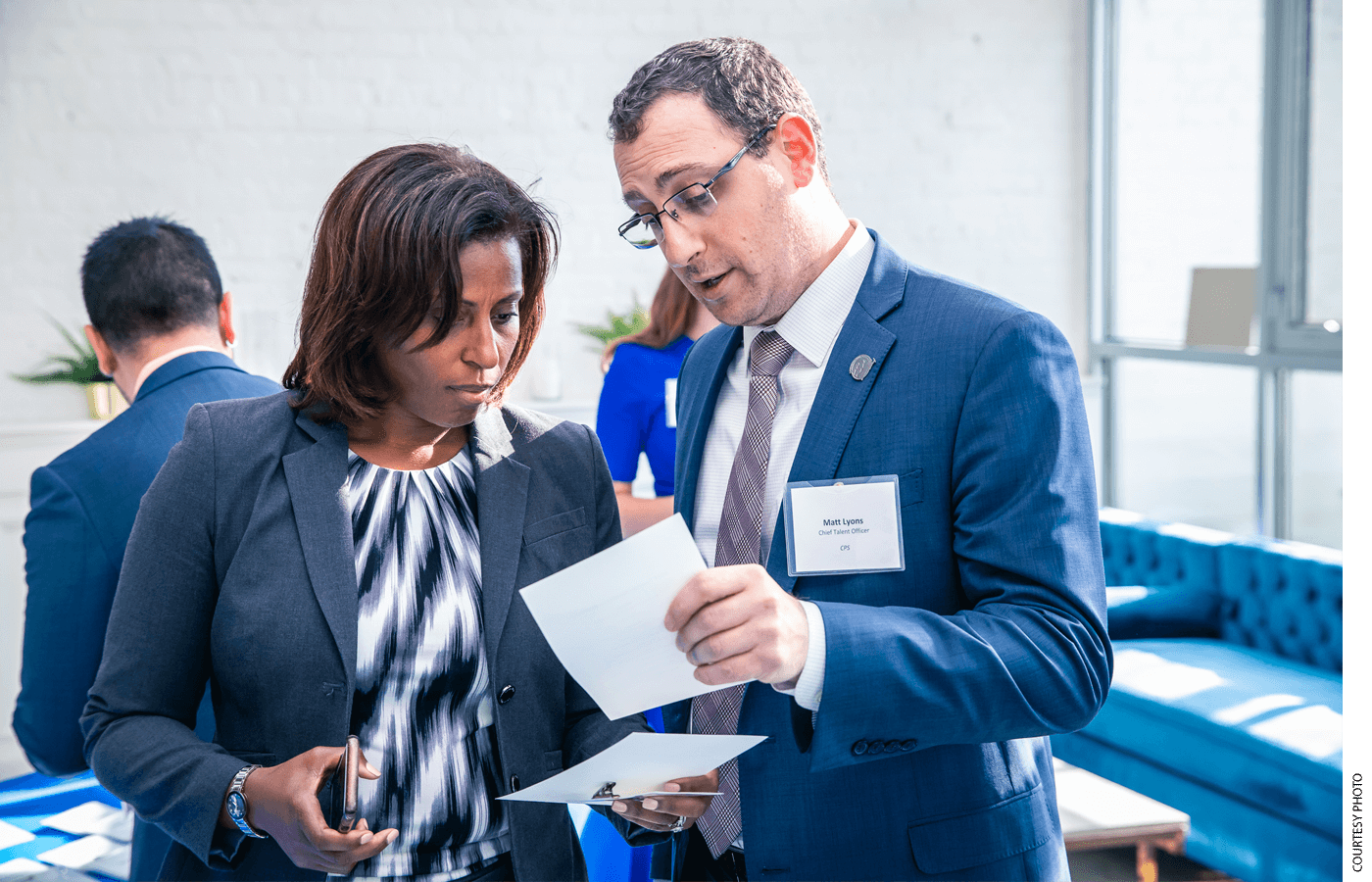
President Biden recently issued an executive order encouraging the Federal Trade Commission to ban “unnecessary occupational licensing restrictions,” explaining that “overly burdensome occupational licensing requirements” lock some people out of jobs and make it harder for people to move between states.
Could licensing for teachers fall under Biden’s description of “unnecessary” or “overly burdensome”?
It’s a question that is particularly timely, not only because of the president’s interest in removing barriers for wage-earners, but also because of the coronavirus pandemic. Because of the pandemic, every state temporarily relaxed licensing rules to allow teachers to delay completing assessments. That policy shift allowed all potential teachers finishing preparation programs to get in front of students, and it permitted current educators to remain working despite any incomplete credentials.
Before reverting reflexively to the pre-pandemic status quo on teacher licensing, policymakers may want to take some time to think through the tradeoffs. They are complicated. Some of them are related to longtime issues in recruiting new teachers—quality, diversity, and, in some specialties and places, scarcity. State-based teacher licensing requirements frequently serve as a proxy for “good at teaching,” yet those requirements may also pose barriers to entry for some teaching candidates.
Economic analyses of occupational licensing generally suggest that licensing reduces employment overall, but for those who do get licensed, it increases wages and increases the likelihood of the individual remaining employed in that position. If the priority is teacher quality rather than quantity, then a licensing system may make sense. If a goal is for teaching to be a long-term career option for individuals, a licensing structure that encourages people to remain in the field may be advantageous. If, however, what is desired is a large influx of new talent into education, then perhaps licensing loses its luster.
In 2001, the National Research Council published a book, Testing Teacher Candidates, exploring a variety of issues related to teacher licensure tests. The book explains that “a perfect test would discourage only incompetent individuals from entering the teaching occupation.” Alas, there is no such thing as a perfect test, so advocates and experts wind up debating the ways in which licensure exams limit teacher supply and whether those limitations advance an end-goal of improving student outcomes.
Rashidah Morgan of Education First expressed skepticism that an all-purpose test was particularly useful: “With certification, we talk as if these tests measure what they are supposed to measure. What are we trying to certify teachers to do, and what’s the way we actually do that? Do we ask teachers — have you been certified for what you’re actually doing?”
Kate Walsh of the National Council on Teacher Quality defended the tests. “Licensing tests provide an objective measure of what teachers have been prepared to do. It’s tempting to say that they must be biased, or they don’t pick up on what really matters, or they’re not predictive. I think those assertions are being made with very little evidence to support them. And that’s hugely concerning,” she said.

The Test as an Obstacle
Traditional teacher certification involves an undergraduate degree (with a declared major in education, for many elementary teachers at a minimum) and at least one but often multiple standardized tests. At the University of North Carolina at Greensboro, a four-year degree in education for a student from North Carolina will cost approximately $28,000 in tuition, $120 for the general Praxis, up to $170 for subject-specific Praxis exams, and $300 for the edTPA, which is an additional practice-based assessment required by more than half of all states.
The associate chair of the Department of Teacher Education and Higher Education at the University of North Carolina at Greensboro, Wayne Journell, points out that many students there are first-generation college-goers who are working to support themselves through school. “Asking them to pay $300 for a test can mean asking them to choose between taking that test or paying rent,” says Journell, a former high school social-studies teacher. He also says that, in his experience, internships and grades are better indicators of the quality of future teachers than any of these current required tests. The tests themselves may not even be evidence-based; a 2020 Education Next article, “The Stubborn Myth of ‘Learning Styles’” found that in 29 states, government-distributed test-preparation materials on high-stakes certification exams included the debunked theory of “learning styles.”
Teaching candidates of color are significantly less likely to pass licensure exams than their white peers. The National Council on Teacher Quality wrote in a 2019 report that 62 percent of black candidates do not qualify for a standard license because they do not pass the test. Among Hispanic candidates, 43 percent do not pass. Well before the pandemic, many districts were already working to recruit a more diverse teaching force, buoyed by research suggesting that all students, and particularly students of color, benefit from having teachers of color. In 2009, University of Washington professor Dan Goldhaber and Michael Hansen published a study that found the benefits of Black students having a Black teacher accrued regardless of licensing status. The push for diversity in teaching is supported by a growing evidence base.
If reducing licensing requirements, or even getting rid of teacher licensing assessments, would make it easier to diversity the teaching force, it’s possible that anything lost from fewer certified teachers could be regained by more diverse educators. Indeed, in a 2015 review of existing research, Goldhaber pointed out that “assigning a Black student to a Black teacher is associated with higher learning gains than assigning the same student to a teacher with one standard deviation higher credential test scores or a teacher who is National Board certified.”
But NCTQ’s Walsh says emphatically that the problem isn’t the tests — it’s how candidates are prepared for the tests. When teacher preparation programs were first required to report program completion rates to the U.S. Department of Education, they were allowed to report program completers as only those individuals who passed the licensure exams. So while publicly available completion rates were almost 100%, the reality is that about 47% of first-time test takers of the main elementary school content exam fail. Walsh points to this failure as part of the larger issue at play, which is that teacher preparation programs aren’t held accountable for producing poor teaching candidates. Rather than a licensure issue or a diversity issue, she calls attention to a selectivity issue. Teacher preparation programs are “driven by a need to fill seats as opposed to selecting those individuals who they believe are capable of achieving a license.”
Jason Terrell, co-founder of Profound Gentlemen, an organization working to recruit and support male educators of color, disagrees. “The testing barrier is a real problem,” says Terrell. He would like to see universities focus more on the experience of students studying education, as well as to redefine what it even means to study education. Policymakers talk about the idea of the “teacher pipeline” as if it’s a discrete entity; when it comes to teacher diversity, Terrell points out that “we struggle with how to support a pipeline that doesn’t really exist.”
If the pipeline for a diverse teaching force doesn’t exist, and if the current licensure structure is an obstacle to building that pipeline, perhaps it’s time to reconsider whether the current structure is able to produce the desired outcome. Some worry, though, about unintended consequences, or mixed messages. To abandon licensure exams for a stated preference of diversity over demonstrated knowledge may veer perilously close to saying that the color of your skin is the defining characteristic of your perceived teaching ability. Walsh suggests that instead what needs to happen is “we need to make teaching more attractive, and we need to get more smart kids to want to go into teaching.”

“Grow Your Own”
A burgeoning phenomenon in teacher pipeline development is the “grow your own” movement. These programs provide entry points into the profession for high school students, college students, and/or non-teaching staff. While typically promoted as diversity initiatives, they can also serve to increase the overall teacher supply. These localized programs could also answer questions such as, “what does it mean to be an appropriately prepared teacher in this district?” This is not to advocate for district-level licensing requirements; rather, to promote the idea that districts could be empowered to hire the right and best teachers for their schools regardless of licensing and certification status of applicants.
One such program is Teach Chicago Tomorrow, launched in October 2020. The inaugural cohort were 100 students from Chicago Public Schools class of 2021. After four years of coursework at City Colleges of Chicago and Illinois State University, they will be ready to work as teachers in Chicago classrooms. It seems a natural evolution of decades of college- and career-ready emphasis to definitively link high school graduation to college enrollment to a stable career. Labeling Teach Chicago Tomorrow as purely a diversity initiative sells the initiative short. The chief talent officer for Chicago Public Schools, Matt Lyons, explained, “we don’t find that the traditional modes of preparing teachers meet the diversity needs that research shows benefits students.” When pushed on whether teacher certification explicitly matters, especially as the district builds this new pipeline to produce its own teachers, Lyons acknowledged that certification “remains meaningful as a floor” while also stating that “quality is about how you define it. And there’s a lot of things we could measure better. We want the best teachers without too narrow a definition.”
Lyons says that if licensing were removed at the state level, most large districts would end up developing and implementing their own forms of certification. While that might increase localized decision-making, it’s far from assured that these systems would be less onerous or more focused on improving student and system outcomes. In districts with particularly strong unions, for instance, district-led systems would be heavily influenced by union demands. Instead, Lyons points to some of the changes that Illinois has made around licensure testing. Specifically, Illinois has temporarily suspended its basic skills assessment requirement while it considers alternative options. The Illinois Licensure Testing System website also indicates that a number of the content area tests are being redeveloped.
If there were one simple solution to teacher quality, it would have been already discovered. It’s more likely that a combination of policy ideas and programmatic efforts will yield real world results. Grow-your-own programs make sense as a true career pathway from K-12, as a stimulator of the local economy by increasing the likelihood that district jobs go to local residents, and as a way to get more diverse teachers into classrooms. But what if those recruitment efforts were combined with a truly high-quality teacher preparation program? In October 2020, just as Teach Chicago Tomorrow launched, the National Center for Analysis of Longitudinal Data in Education Research published a working paper showing that the Massachusetts licensure exam is predictive of both teacher value-added effects on student achievement and teacher performance ratings. The report found the Massachusetts Tests for Educator Licensure were more predictive of performance ratings for teachers of color than for white teachers. Maybe better tests are a better option than eliminating the tests entirely.

Unlicensed Non-Teachers
Licensed teachers are far from the only adults who interact with students in a school setting. In fact, there are numerous opportunities for non-teachers to have hands-on involvement in education. Approximately 1.4 million paraprofessionals (teaching assistants) were employed in 2019 across the U.S, according to the Bureau of Labor Statistics. One recent meta-analysis conducted by Johns Hopkins University’s Center for Research and Reform in Education found that paraprofessionals can provide tutoring with at least as good outcomes as certified teachers. Teaching assistants — without the specialized training, the certification, and the higher salaries — were at least as effective as teachers in both one-to-one and one-to-small-group tutoring. For elementary students struggling with reading, para tutors were actually more effective. It is true that the paras in this study had a bachelor’s degree, while many states only require paras to have some number of college credits/hours.
Johns Hopkins’ Robert Slavin was testing some of these ideas in Baltimore, Maryland. “We’ve given a lot of thought to how a national tutoring initiative, designed to provide proven instruction delivered by college graduates without teaching certificates, could expand both the availability and diversity of classroom teachers,” Slavin said in an interview for this article that was conducted before he died in April 2021. He sees this working both ways — getting more people inside schools to support learning, and giving schools the opportunity to see that these non-certified individuals can meaningfully contribute. “Our experience is that non-certified college graduate tutors will come from their local communities,” Slavin said. “We have been recruiting terrific tutors to work in Baltimore city schools. Most applicants are recent graduates from local universities. About 90%…are African-American or Hispanic. They are eager and able to make a difference in the place they themselves grew up.”
Amid the pandemic, states have also relaxed licensing rules for substitute teachers. A number of states, including Missouri and Colorado, are allowing individuals with only a high school degree to obtain substitute teacher licenses. Requiring extensive certification and licensing for permanent teachers doesn’t achieve much if positions go unfilled except by a substitute.
If individuals can serve as substitute teachers, paraprofessionals, or tutors with limited training — or even on-the-job training — why would we not open the doors as wide as possible?
America will always need effective, trained teachers. But the whys and hows of training have been shifting for decades, and the ability to pass expensive tests is only one indicator of an individual’s ability to produce desired student outcomes. “The pandemic has highlighted a lot of what we already knew was missing when it comes to teacher preparation. The traditional idea of teacher preparation…follows a model that seems to have been out-dated for some time. We need to change the emphasis in terms of what excellence looks like,” Chicago’s Matt Lyons said.
Would removing the bottleneck, if not outright obstacle, of licensure as we know it lead to a more robust marketplace for education jobs and a more diverse teacher workforce? Could we keep licensure while buttressing teacher preparation programs, but create new and disparate pathways for careers in education beyond traditional teaching jobs? Now certainly seems the time to consider these questions. Biden’s executive order notwithstanding, a national move by the Federal Trade Commission against teacher licensing requirements seems unlikely. But if states just thoughtlessly return to the pre-pandemic teacher certification status quo, they’ll be missing an opportunity.
Liz Cohen is a senior director at Whiteboard Advisors.


